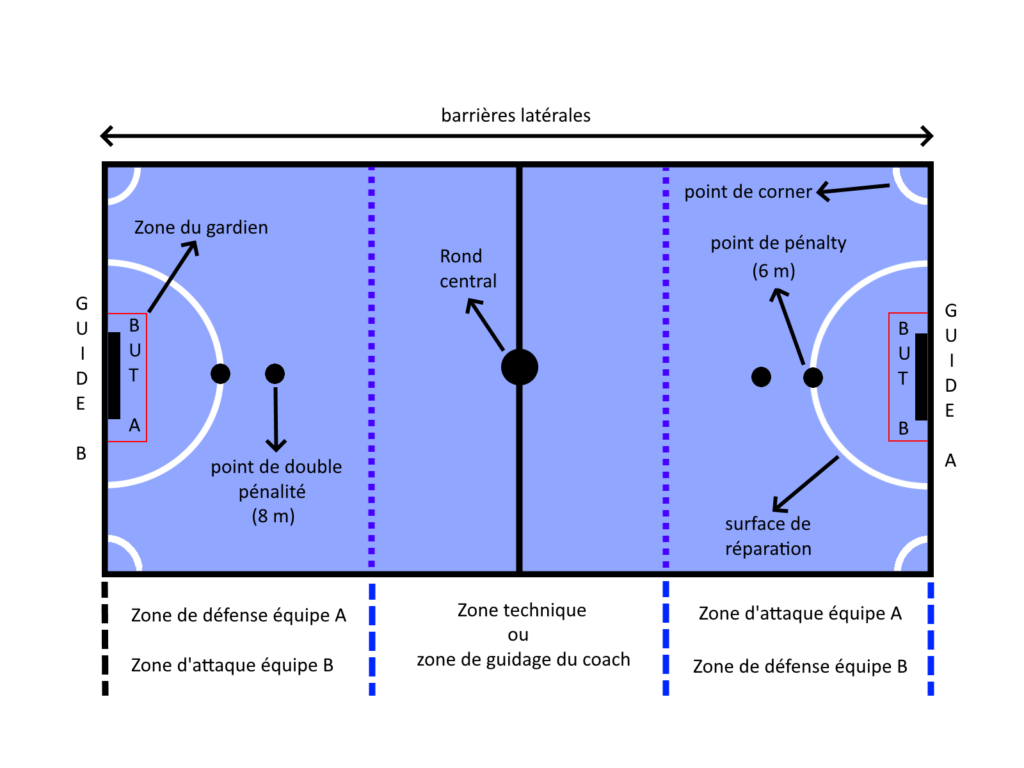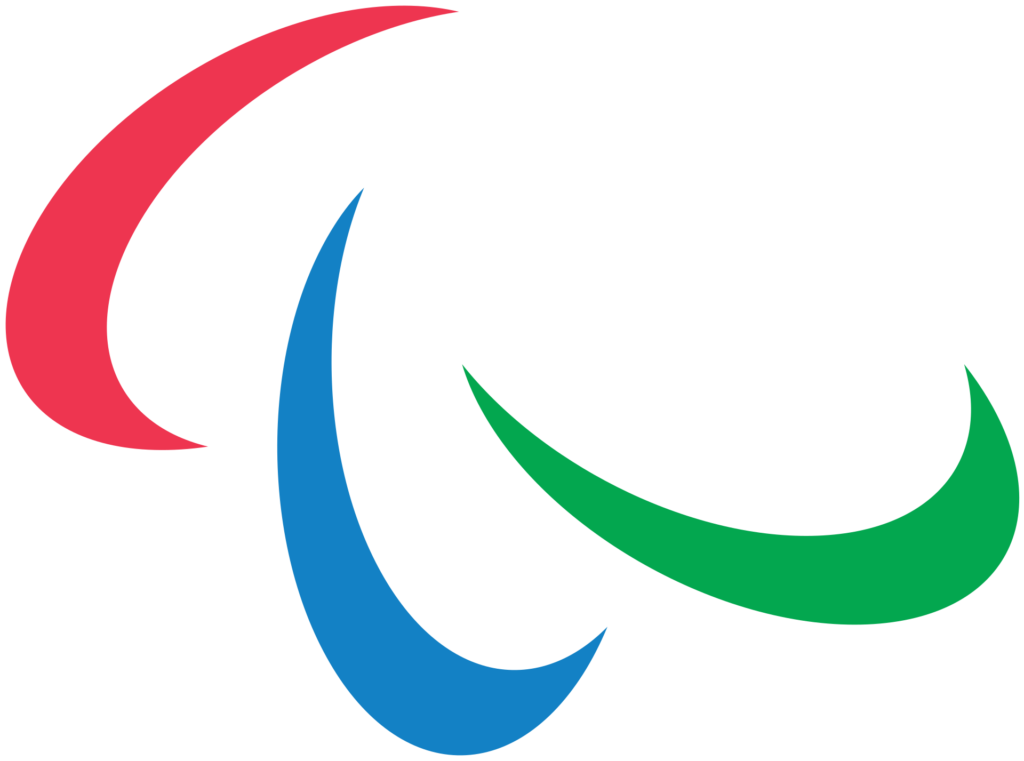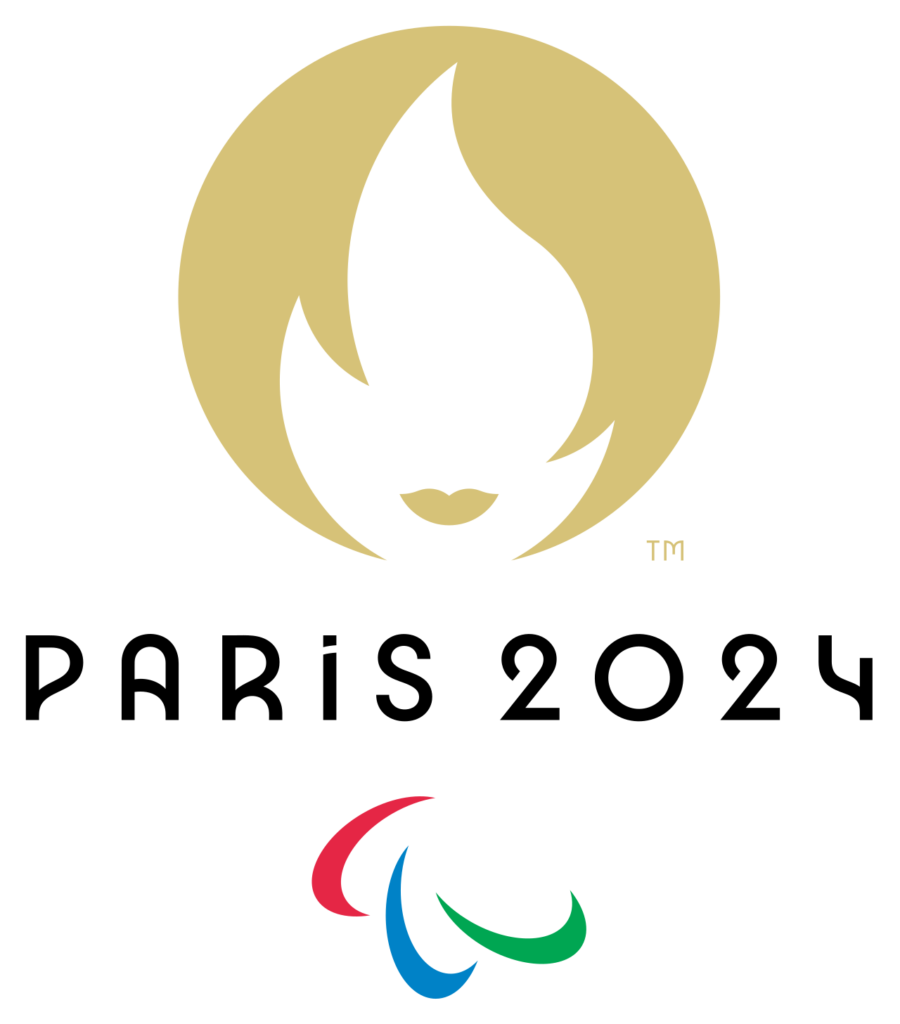For every sport, there are rules. These rules make the game possible by guaranteeing equal opportunities for all participants so that they can give the best of themselves in optimal conditions of practice. The keeper of these principles is the referee, who is present to enforce the rules of the game.

In blind football, officiating is organized as follows :
- a first or main referee : he/she directs the match and ensures the application of the rules of the game. He/she draws up the report of the match and communicates it to the official authorities. His role is also to time the game.
He is the one who indicates to the score table verbally or by clear gestures each fact of the game so that everything is recorded.
He also checks the players’ equipment : eyechades and eye patches.
He is the only one who can stop the game if he it’s necessary (serious injury of a player for example) or to impose sanctions on the athletes or officials. - a second or assistant referee : he covers the half of the field opposite the first referee. He helps him to enforce the rules of the game. He makes sure that the time-outs are respected : 1 minute per team and per half.
In case of disagreement between the two referees, the opinion of the main referee will prevail.
- a scoring table : it has the role of counting the timeouts, the number of fouls of each team as well as the personal fouls of each player.
Fouls in common with classic soccer
As in traditional soccer, fouls result in free kicks. They can be direct (the player shoots directly at the goal without passing the ball to a teammate) or indirect (with a pass). Here are some examples of fouls :
- charging or pushing an opponent
- controling the ball with the arm or hand
- holding an opponent to prevent him from moving towards or with the ball holder
- or try to hit an opponent
There are others, this is not an exhaustive list. In the event of a major foul, a player may be given a yellow or even a red card.
The free kick is taken from the place where the foul was committed. Unless the foul occurred in the penalty area, in which case a penalty kick will be taken.
The players of the opposing team must be at least 5 meters from the spot where the free kick is to be taken. The player taking the free kick has 4 seconds to shoot after the referee blows his whistle. The opposing team may set up a wall if they wish.
In most cases, two people take a free kick : the kicker puts the ball between his feet and a player stands behind the kicker to stabilize the ball with his foot.

Fouls specific to B1 category
Category B1 has specific rules related to the adaptations necessary for blind players to play soccer. Two teams of five players play against each other (four field players and one sighted goalkeeper). The match lasts two playing periods of 25 minutes each in continuous time in the French championship. At the international level, the game is played in two periods of 20 minutes but in real time : the clock is stopped at each interruption of the game.
Regarding field players :
- The « no-voy » rule : the player has to distinctly signal himself with a “voy” when looking for the ball, attacking it or disputing it with another player
As a reminder, “Voy” means “I am going” or in Spanish. Each player who is not carrying the ball has the obligation to signal by saying the word “voy” clearly and distinctly. It is thanks to this sound information that the ball carrier knows the position of his opponents.
- the sandwich rule : when two players block an opponent along a side barrier. Only duels for the ball are allowed ; other players must stay away and not interfere.

Regarding the goalkeeper, a foul is whistled in the following cases :
- if, after giving the ball, the goalkeeper receives it back without any opponent having touched it or without crossing the halfway line
- if the ball does not rebound in his own half of the field during a clearance
- if the goalkeeper waits more than 4 seconds before playing the ball after controlling it
- if the goalkeeper intervenes in the game outside his zone (in B1 : the “goalkeeper’s zone” is different from the “penalty area”) : this foul is penalized by a penalty
There are also faults related to the guidance of the players :
- the offensive guide can only guide in the offensive zone of his team
- the goalkeeper can only guide his players in the defensive zone of his team
- the coach can only give information to players in the middle zone

Regarding the accumulation of faults :
- Any player who commits 5 personal fouls during a game will be excluded from the field. He can be replaced but will not be allowed to enter again.
- From the 6th accumulated foul in a half for the same team, we will play a double penalty.
The double-penalty is a direct shot 8 meters from the goal, in the axis, without a wall. All other players must be at least 5 meters behind the ball.
This double-penalty is played at each foul after the 6th accumulated foul by a team.
At the end of the half-time, the counter of the faults of a team is put back to 0. But not the personal fouls of a player
Characteristics of the B2/B3 category
Two teams of five players play against each other (four field players and a goalkeeper). The match lasts two times 20 minutes in effective time. This means that a stoppage of play (such as a foul or goal clearance) will stop the clock.

In this category, the rules of a “futsal” match are generally applied with some adaptations :
- The light must be of equal intensity throughout the field and must not interfere with the progress of the game (no reflection)
- The goalkeeper must not leave the penalty area and interfere with play outside the penalty area
- On a goalkeeper clearance (as in B1), the ball must rebound before the halfway line
- B3 players must be clearly identified with a headband to differentiate them from B2 players
- A team may not have more than two B3 players
- If a B2 player is injured and cannot be replaced by another B2 player, the team must continue with only three players
Documentary resources
This article is a summary of the main rules necessary to adapt soccer for blind and visually impaired people. All the rules are available on the IBSA website (International Blind Sports Federation) : https://www.ibsasport.org/sports/football/rules/
Retrouvez-nous également sur nos réseaux sociaux :Vous aimez cet article ? Aidez-nous à le faire connaître en le partageant :











